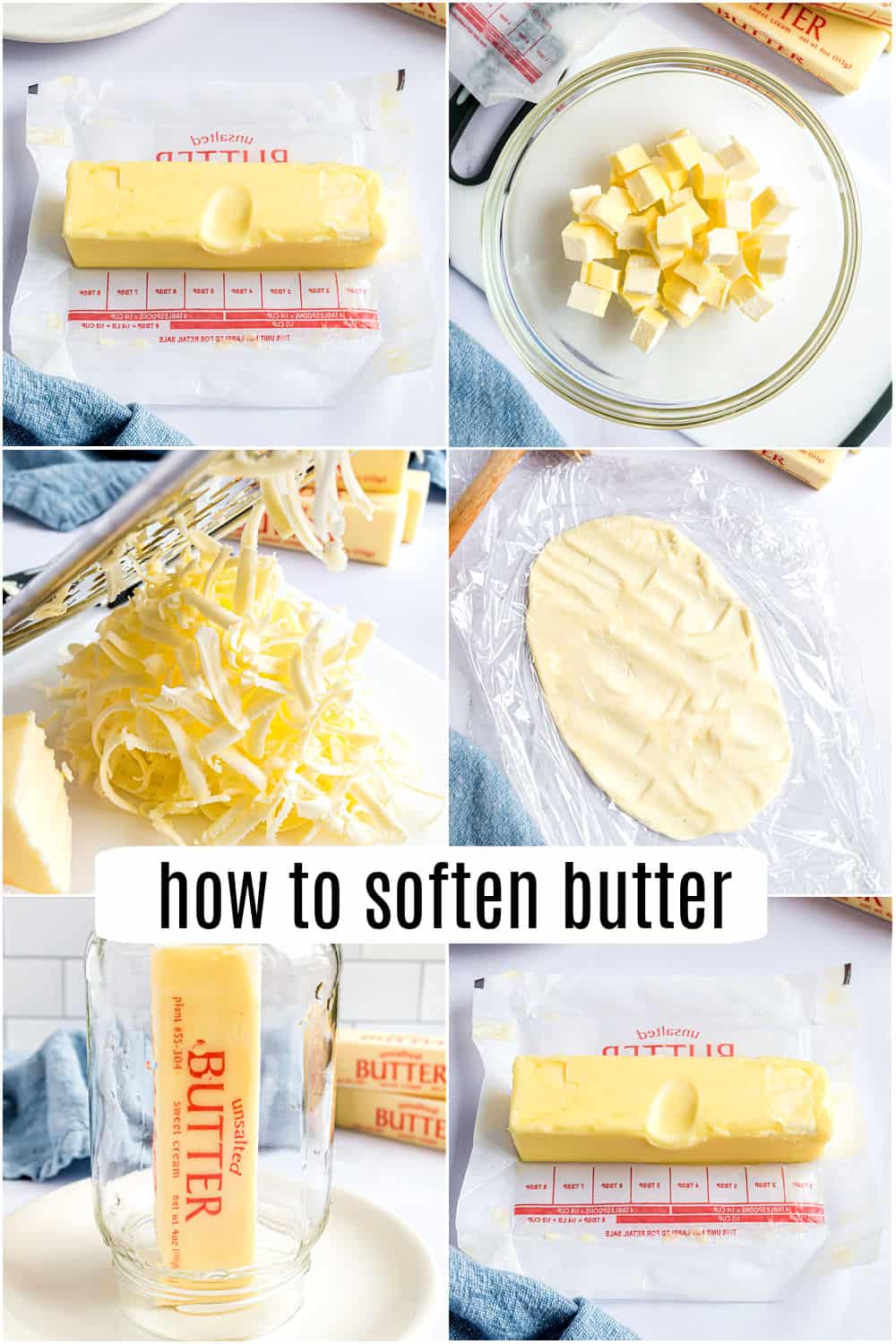How to Soften Butter – Shugary Sweets

Many recipes call for softened butter. Did you forget to plan ahead, or maybe you just saw this note in the recipe card. Don’t worry, we’ve got 5 ways to soften that butter quickly!
Whether you’re making our delicious chocolate chip cookies, or a batch of banana nut muffins, you’ll need softened butter! Here’s the why and how!
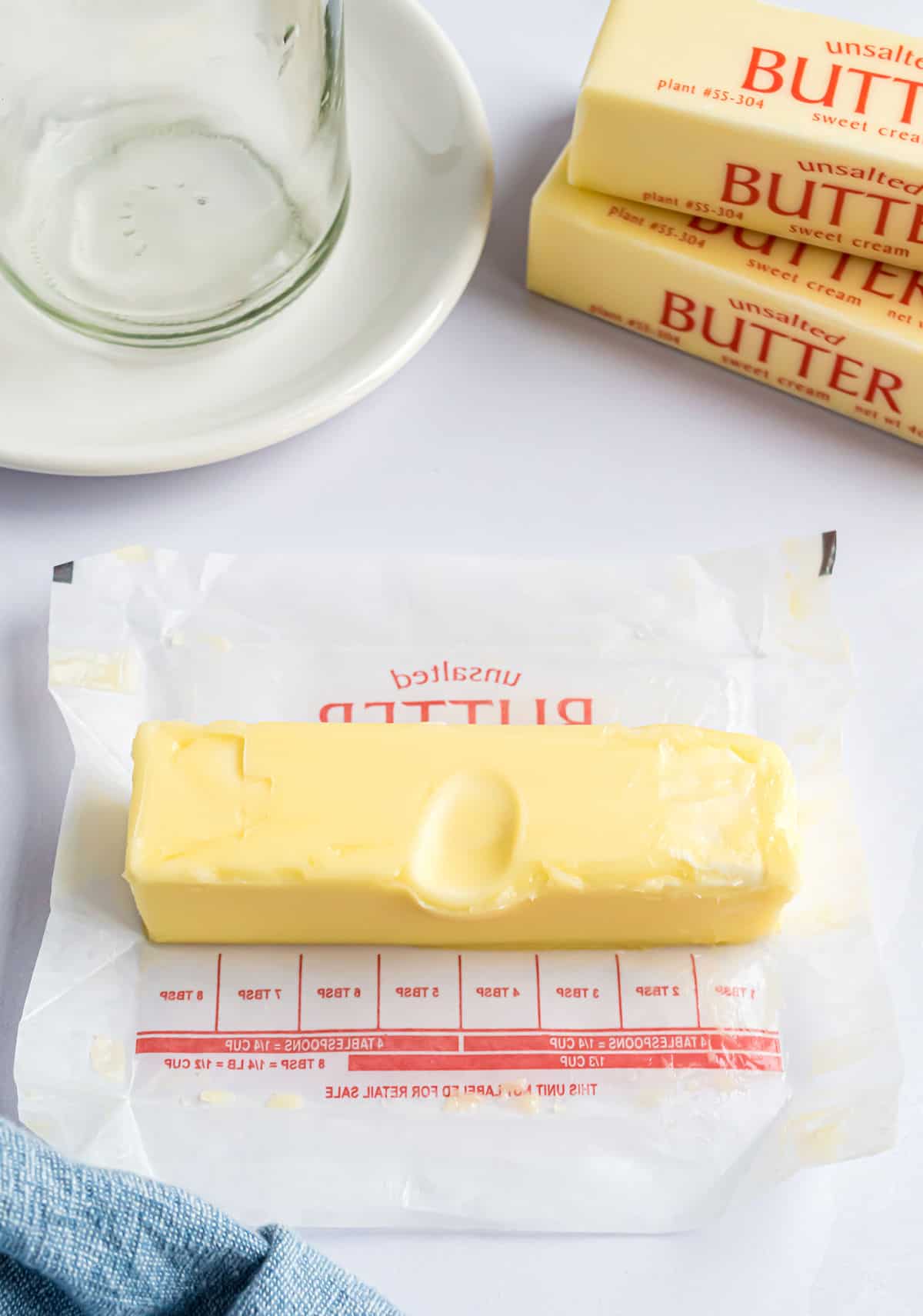
Why Use Softened Butter
When a cookie recipe calls for softened butter, you might think it’s okay to melt it instead. But, that can drastically change the consistency and quality of your final product.
Softened butter is easy to blend into your other ingredients, which makes it the ideal ingredient. Using butter that is melted may result in a flat or greasy baked good. Conversely, using butter that is cold won’t blend well with other ingredients and can’t trap air during the blending process.
The science behind softened butter comes from Cooks Illustrated. Butter is a fat that can hold air during the creaming process. When baked, these air bubles expand and produce a perfect, fluffy texture in your baked good.
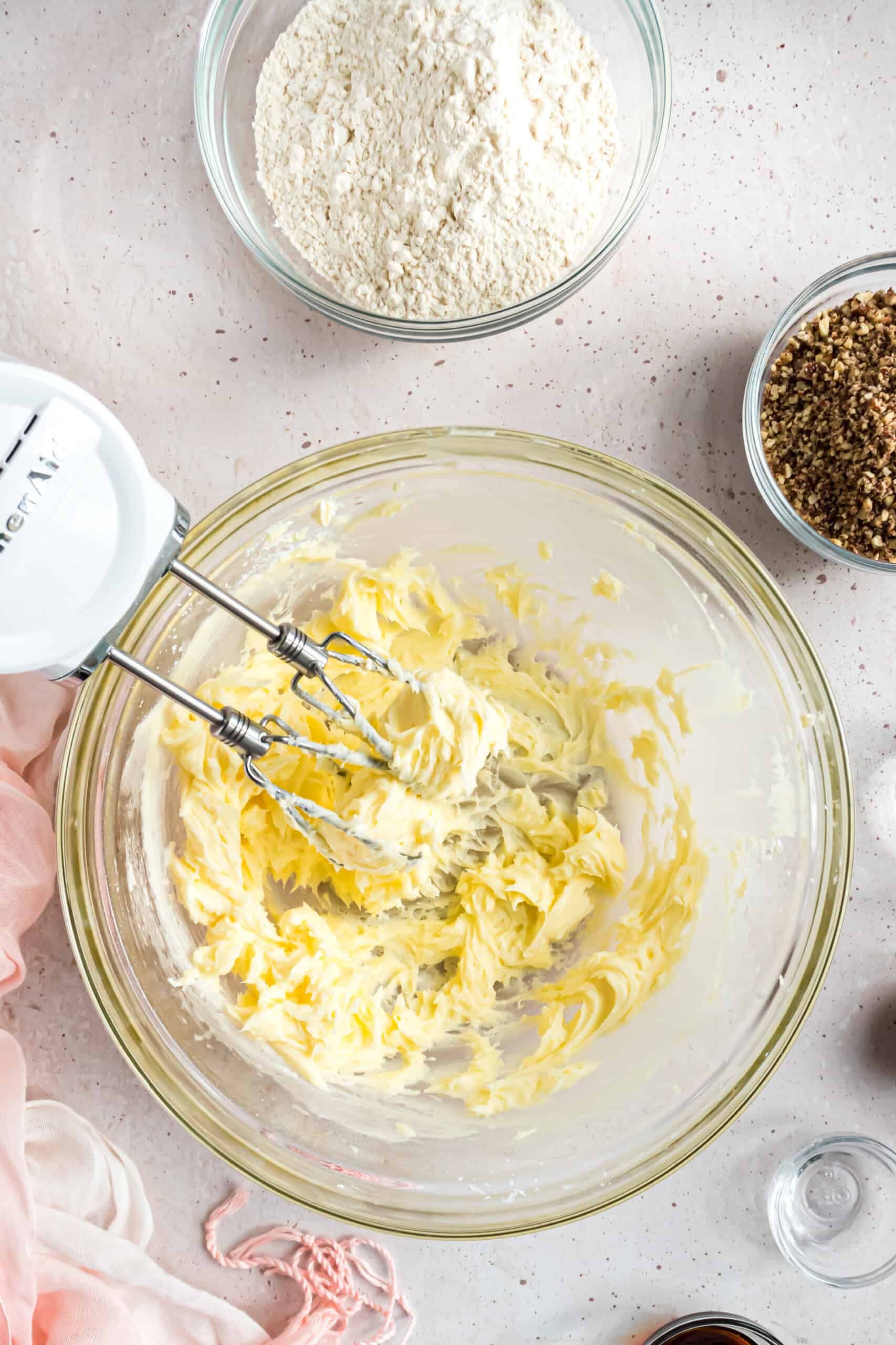
How To Soften Butter
First, let’s define “what is softened butter?” Typically when a recipe says softened butter, it means “room temperature”, which is about 68-72 degrees F.
You’ll know when you achieved this consistency if you press your finger into the middle of the stick of butter. If it leaves an indentation but doesn’t stick to your finger, it is softened (keep in mind the middle of the stick takes longer to soften, which is why that is where we always check).
Another test you can perform is your should be able to slice through the stick of butter easily, meeting some resistence.
Finally, since softened butter should be at 68-72 degrees F, you can also use a probe thermometer to get the most accurate read.
There are many ways to achieve the softened consistency of butter you need.
The Counter-top Method
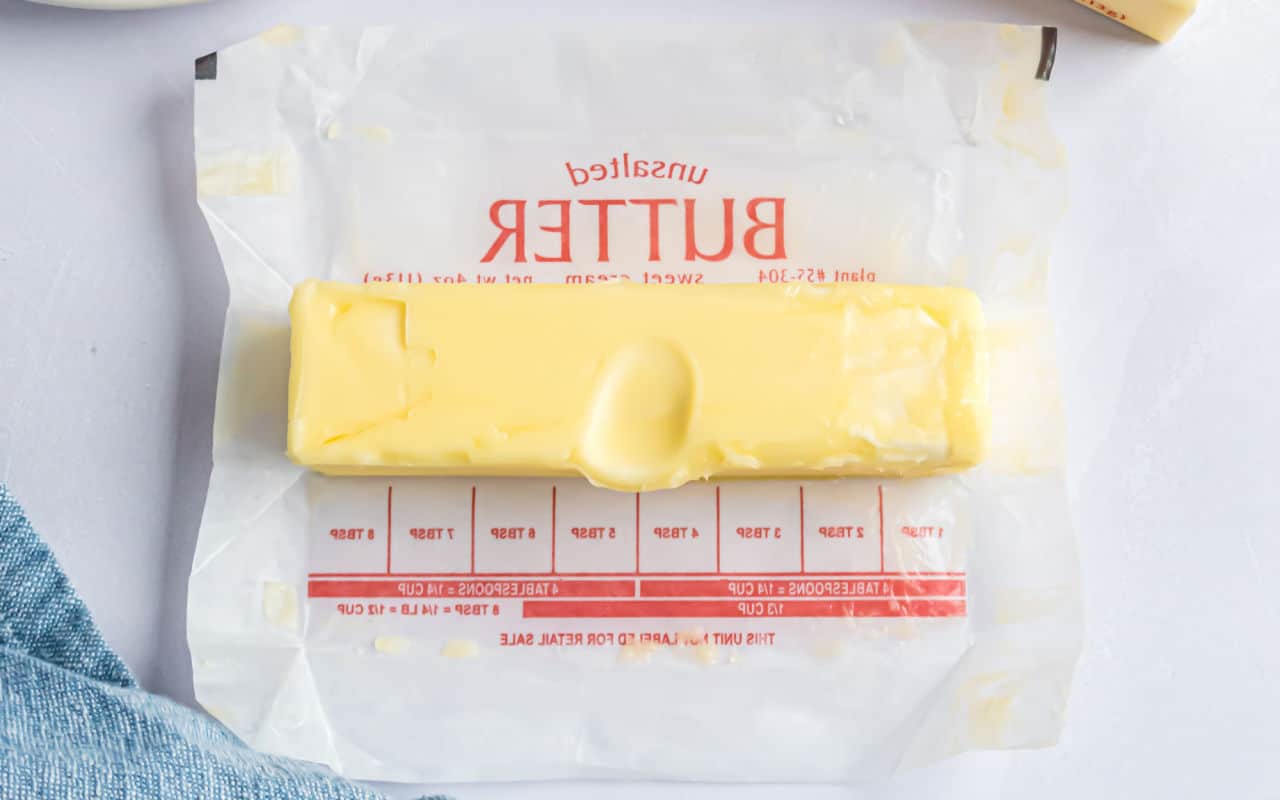
Soften Time: 60-90 minutes
- Remove butter from fridge.
- Set on counter.
- Butter will come to softened stage within 60-90 minutes depending on room temperature.
The Pros and Cons- while this is the most utilized method, it’s also not always convenient. Leaving the butter out TOO long can be bad for the recipe as well. And forgetting the to leave the butter out is a common mistake. However, if done correctly, it’s the most common method for softening butter.
Mason Jar
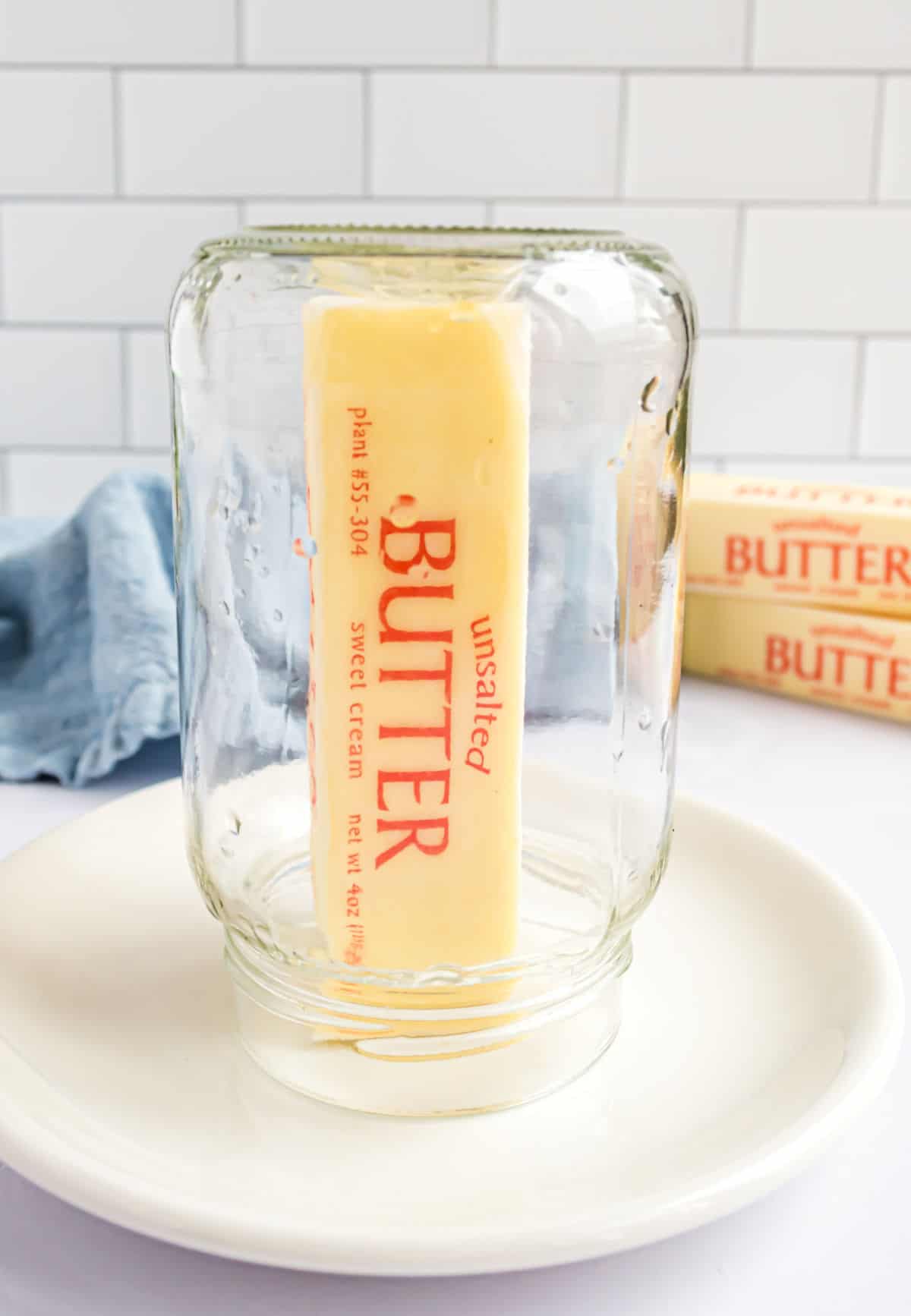
Soften Time: 10 minutes
- Fill a tall mason jar (or large glass measuring cup) with water. Heat in microwave for two minutes.
- Pour out the water and set the butter (still in wrapper) on it’s end vertically and place the glass over the stick of butter.
- The heat from the container will be released gently around the butter to soften.
The pros and cons- While softening on the counter is my favorite method, this would be my NEXT favorite. It’s a gentle softening, that doesn’t take long! It’s also not messy, because the butter stays in the wrapper. Just be sure to choose a microwave safe jar or bowl (we love using quart size mason jars for this)!
Cubed Butter
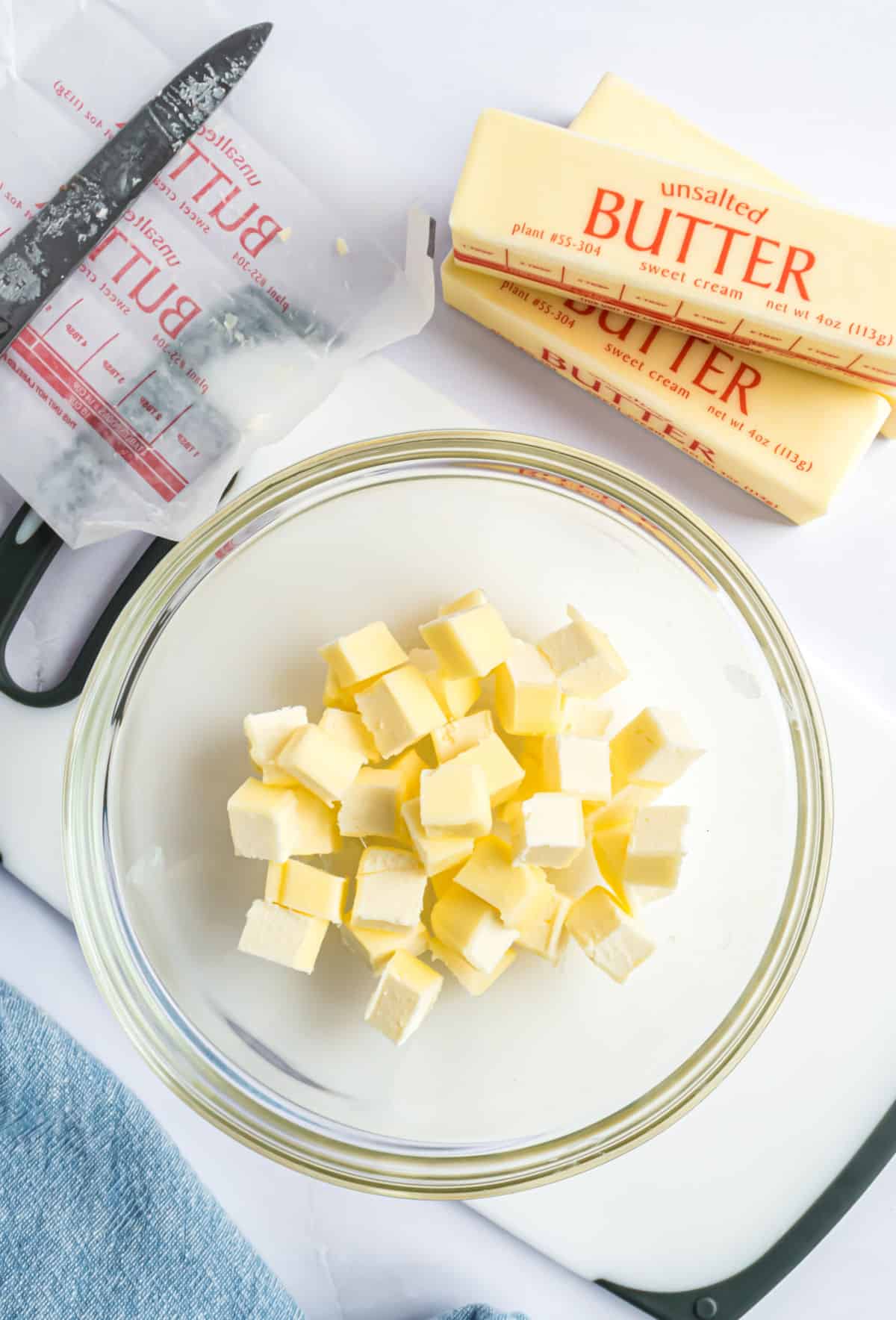
Soften Time: 15 minutes
- Cut the stick of batter lengthwise and then repeat so that the stick has been cut into four long sticks.
- Then cut the stick into cubes that are 1/2-inch or smaller.
- This method will reduce softening time to about 15 minutes, depending on size of cubes and temperature in house.
The pros and cons- This method takes a few extra minutes to cut, but doesn’t alter the texture of the butter. Additionally, you’ll have a few more dirty dishes (cutting board and knife).
Pound the Butter
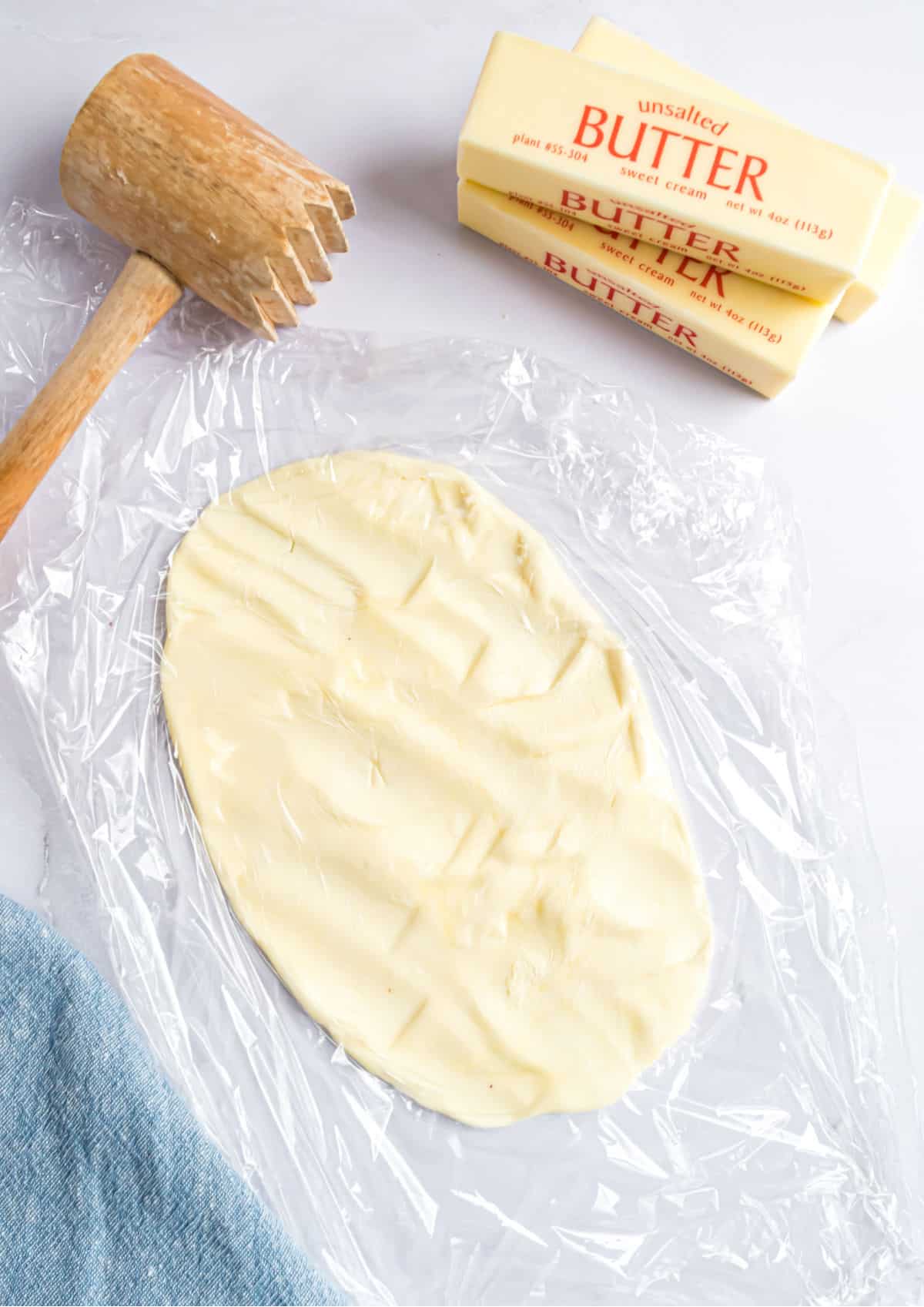
Soften Time: 5 minutes
- Place the butter (unwrapped) between two large pieces of plastic wrap. Use a rolling pin or kitchen mallet, and pound the butter into a flat sheet, about 1/8-inch thick.
- Let rest for about 5 minutes, then carefully peel the plastic wrap away from the butter.
The pros and cons- While this one is fast, it can change the texture of the butter if you “beat or roll” on it too much. Also, can be messy if you don’t peel the plastic wrap quickly.
Grate the Butter
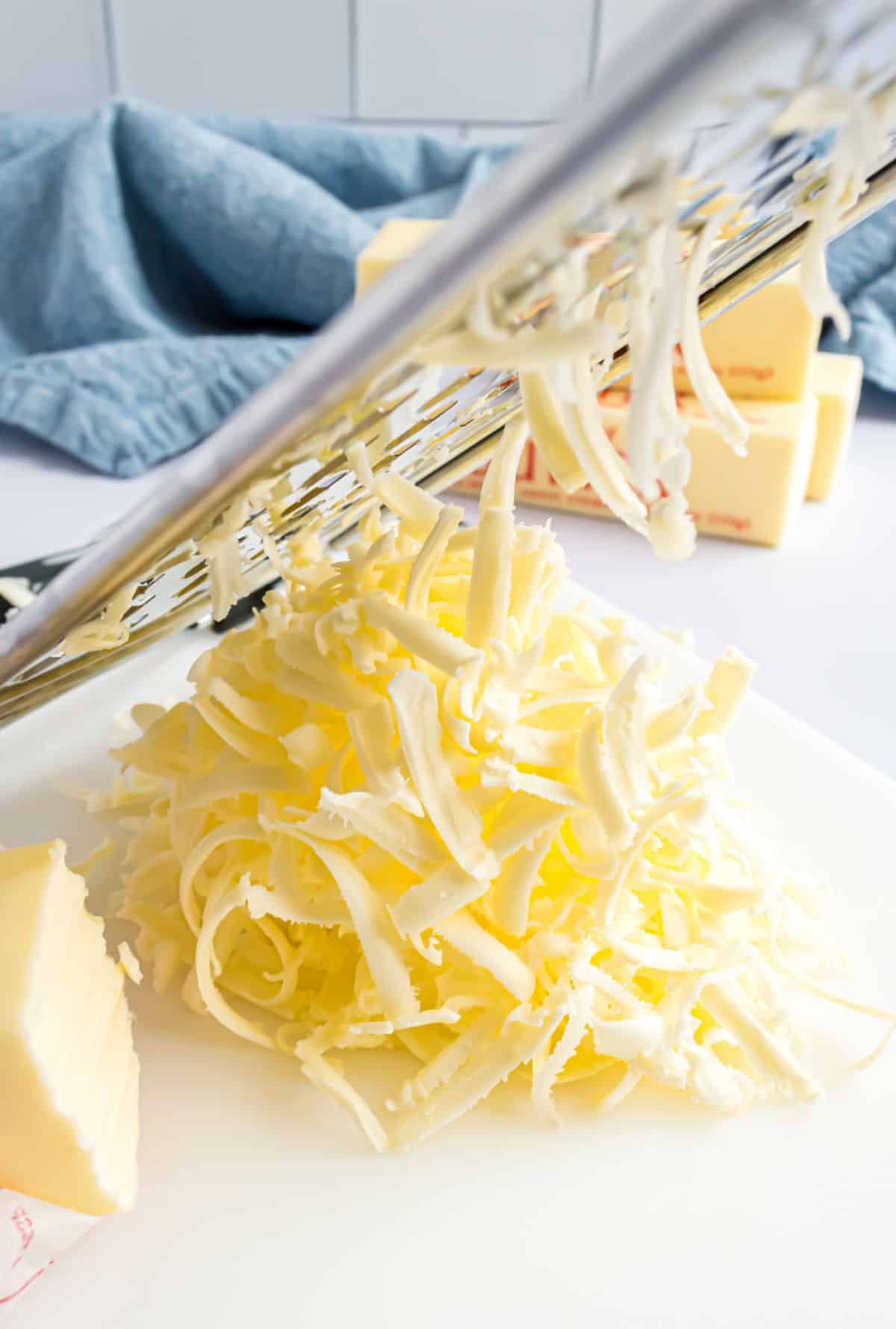
Soften Time: under 5 minutes
- Use the large side of a box grater, and holding the wrapper on the stick of butter (peeling down as you go), run the butter in one direction down the grate.
- Many pastry recipes advise this method because it incorporates the butter into the mixture quite easily.
- You can use the butter while cold and it still blends well, especially for scones!
The pros and cons- This method is the fastest way to soften butter with a consistent texture. The downside to this method is the time it takes to grate the butter, and clean the box grater.
More Kitchen Tips You Should Know
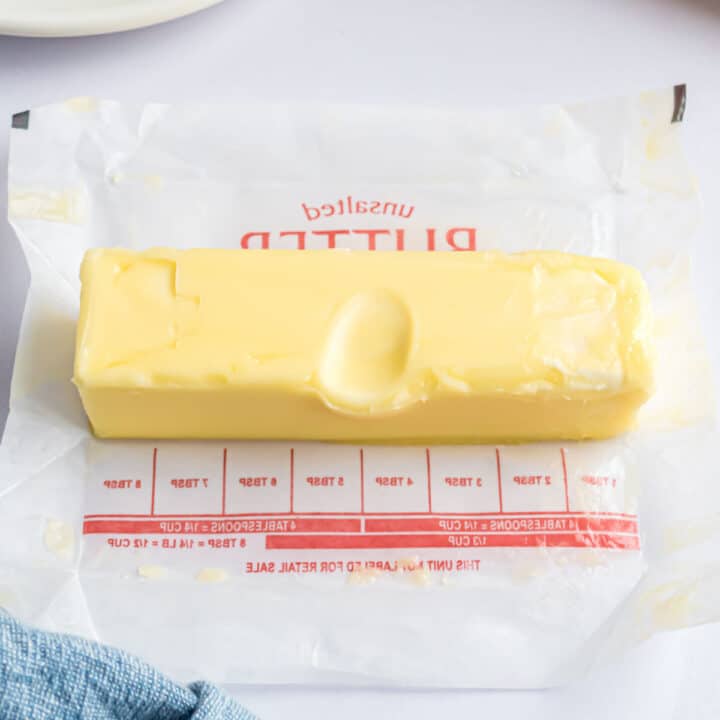
Many recipes call for softened butter. Did you forget to plan ahead, or maybe you just saw this note in the recipe card. Don’t worry, we’ve got 5 ways to soften that butter quickly!
Instructions
- Counter. The first and easiest method of softening butter is to take it out ahead of time. How quickly this method will work depends on the temperature of the room. A stick of butter will take approximately 1-2 hours to soften.
- Cut the butter into smaller pieces. Cut the stick of butter lengthwise and then repeat so that the stick has been cut into quarters. Then, cut the stick into cubes that are ½” or smaller. This method will reduce softening time to 10-15 minutes depending on the size of the cubes.
- Grate the butter. Using the large size of a box or hand-held grater, using the wrapper to grasp the stick, run the stick of butter in one direction down the grate. Many pastry recipes, including those for scones, advise this method for incorporating the butter with the other ingredients. The butter will be softened in less than 5 minutes using this method.
- Heating it with an overturned container, such as a mason jar. Fill a quart size mason jar, or measuring cup with water. Microwave the container for 2 minutes. Carefully pour out the water and set the butter, still in the wrapper, on its end so that it stands vertically. Place the cup over the stick of butter and leave it for about 5-10 minutes. The heat from the container will be released gently surround the stick of butter and soften it. At the end of this time, remove the container and check the butter. It may be softer on the outside than in the core of the stick.
- Pound the butter flat. – Place the stick of butter between two large pieces of plastic wrap. Using a rolling pin or kitchen mallet, pound the butter into a flat sheet, about ⅛th” thick. Let rest for about 5 minutes or until desired softness is achieved. Carefully peel the plastic wrap away from the butter while folding the sheet of butter.
Notes
- How to Know if it’s Softened. Press your finger into the middle of the stick of butter. If it leaves an indentation but doesn’t stick to your finger, it is softened (keep in mind the middle of the stick takes longer to soften, which is why that is where we always check)
- Another test you can perform is your should be able to slice through the stick of butter easily, meeting some resistence.
- Finally, since softened butter should be at 68-72 degrees F, you can also use a probe thermometer to get the most accurate read.
Nutrition Information:
Yield:
8
Serving Size:
1 Tablespoon
Amount Per Serving:
Calories: 102Total Fat: 12gSaturated Fat: 7gTrans Fat: 0gUnsaturated Fat: 3gCholesterol: 31mgSodium: 91mgCarbohydrates: 0gFiber: 0gSugar: 0gProtein: 0g
*Nutrition facts are an estimate and not guaranteed to be accurate. Please see a registered dietitian for special diet advice.

